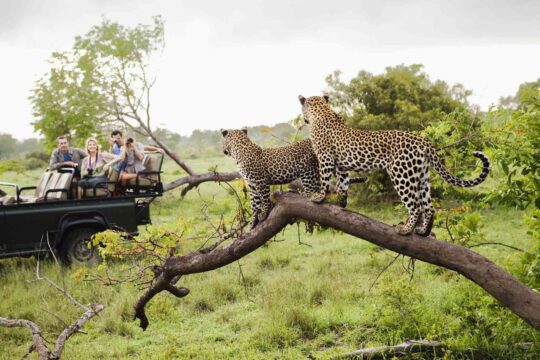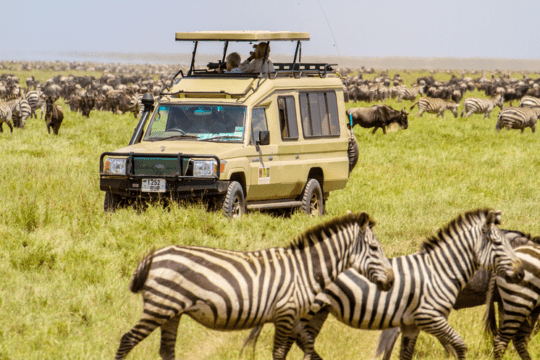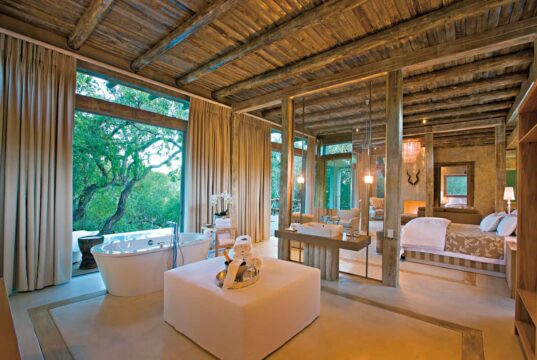 By Hilary Dubyk
By Hilary Dubyk
You have always dreamt of going on an African safari and the time has finally come to start planning – how exciting! But now you are faced with the dilemma of choosing between Kenya and South Africa, both of which come highly recommended. Well you have come to the right place. The Eclipse travel experts are here to guide you through the pros and cons of each, helping you determine the ideal choice for your preferences.
Both Kenya and South Africa boast a formidable reputation in the safari world. Kenya, often hailed as the birthplace of safaris, is home to the famous Masai Mara National Park and shares the spectacle of the Great Migration with Tanzania. Meanwhile, South Africa is home to Kruger National Park, renowned for its up-close wildlife encounters and more family-friendly atmosphere. With over 10 million annual visitors, South Africa appeals not only for its safari offerings but also for its vibrant Cape Town, winelands, scenic coastal roads, historical battlefields, and much more. Functioning as a hub for southern Africa, many visitors extend their stays beyond South Africa into neighbouring countries such as Botswana and Zimbabwe. In contrast, Kenya, with around 2 million visitors, is more safari-centric and visitors tend to visit as a standalone destination or in conjunction with Tanzania. Both countries lead the way as African destinations for international visitors and offer excellent experiences, however there are several key differences to help you determine your preferred destination.
 Safari in a Kruger Private Reserve
Safari in a Kruger Private Reserve
Wildlife
Let’s start with the most important factor for many people – the abundance and diversity of wildlife. Both Kenya and South Africa are rich in biodiversity and offer exceptional wildlife encounters. Both countries are home to the Big Five – Lions, Leopards, Elephants, African Buffalo, and Rhinos. The Masai Mara in Kenya stands out for its dense concentration of big cats. In comparison, the Kruger in South Africa boasts high numbers of elephants, although every animal can be found here since it is vast park with very varied terrain.
However, an important consideration is how the wildlife densities fluctuate across regions within each country and seasons. For example, during the wildebeest migration season in the Masai Mara (July – October), the concentration of game peaks and is probably higher than anywhere in Africa, but once the wildebeest move on it will diminish significantly. Kruger’s game density remains much more consistent year round and is always excellent.
Ultimately, both countries guarantee a rewarding wildlife experience if you choose the right locations at the right times. But from a purely wildlife perspective, if I had to make a call, I would say that South Africa has a slight advantage for its consistency and variety.

Safari in the Masai Mara (during Migration season)
Landscapes & Scenery
In South Africa, most reserves are fenced (with the exception of Kruger) and so there is a clear division between conservation and areas claimed by human settlements. In contrast, Kenya does not have fences so the wildlife areas and those occupied by local people seem one and the same to the outside traveller. You will often see a local Masai herding his cattle in the presence of elephant, giraffe and zebra. Many will argue that Kenya offers a more ‘authentic Africa‘, where wild animals and mankind roam the savannah together.
Whilst on safari in the Masai Mara, you will be captured by the sense of space as the vast savannah plains seem to stretch as far as the eye can see. Grazing on this landscape will be herds of wildlife and, although you may not have the opportunity to get particularly close to the individual animals, the collective image is truly iconic. The quintessential aspect of a Kenya safari is the annual Migration – the constant loop travelled by millions of wildebeest and zebra in their pursuit for fresh grazing grounds, followed by opportunistic predators! To witness such staggering numbers of wildlife in one location is truly extraordinary, and an experience with which South Africa simply cannot compete.
A safari in South Africa offers landscapes with denser bushveld and therefore doesn’t often afford guests panoramic views. However, where you will compromise on a sense of space and endless horizons, you generally make up for with an increased proximity to the wildlife. The Masai Mara might offer you a view of 60 elephants crossing the savannah, but the Kruger provides the chance to see a large bull elephant at very short range.
 Tented camp in the Masai Mara
Tented camp in the Masai Mara
Accommodation & Comfort
Kenyan safari lodges and camps emphasize harmony with natural surroundings, featuring spacious canvas tented suites with private verandas offering panoramic views. Eco-friendly practices and authentic cultural interactions are often highlighted.
In South Africa, higher-end safari accommodations showcase architectural splendor, blending contemporary design with traditional African elements. Options range from lavish suites with private plunge pools to exclusive-use villas, providing secluded and intimate experiences. Canvas tends to be less common in South Africa due to the greater temperature fluctuations.
So while many camps in Kenya have remained true to the traditional tented safari style, South Africa is also the place to go for those that prefer their creature comforts – the term “luxury safari” takes on an entirely new height here. Since the general trend in South Africa is towards luxury, even the lower priced options still reflect a higher level of luxury when compared to their counterparts in Kenya. So if you like the idea of a luxury suite over a canvas safari tent, then we would recommend spending your first safari in South Africa.
 Luxury lodge in the Kruger area
Luxury lodge in the Kruger area
Accessibility
For Australian clients, South Africa proves more accessible due to the direct Qantas flights between Sydney and Johannesburg. Kenya requires a stopover, either in Johannesburg with that Qantas flight, or somewhere enroute with airlines like Singapore Airlines, Etihad, Emirates, or Qatar.
Once in the country however, both Kenya and South Africa has efficient internal flight networks that facilitate quick and easy access to various safari areas.
Time Spent On Safari
Another factor to consider is the length of time you intend to spend on safari. If you intend to spend a week or more on safari, Kenya can be an incredible experience because of the wide variety of wildlife-rich areas with contrasting landscapes and activities on offer. There are also easily accessible and stunning beaches nearby, such as Zanzibar and the Kenya coast.
However, if you are unsure about safari, or only want a few days of wildlife viewing on your holiday, then South Africa holds a distinct advantage. You can easily experience a fantastic safari with great wildlife sightings for as little as 2 or 3 nights incorporated into a more diverse holiday. South Africa provides the opportunity to enjoy a city break in Cape Town, a trip along the Garden Route, wine-tasting and gourmet food in the Cape Winelands, a beach break, and an exciting safari all within one country!
Cost
The final factor is cost. While both countries offer safaris across a wide cost spectrum, the primary difference lies in the currency used for pricing: Kenya charges in USD, while South Africa prices in South African Rand. At the time of writing this blog post, 1 AUD = 0.65 USD and that same 1 AUD = 12 Rand. So, in general your money goes farther in South Africa and you can have a lower cost safari while staying in a relatively higher standard of accommodation.
Additionally, from 1 July 2024 the Masai Mara park fees are increasing to USD 200 per person per day which is a significant expense to take into consideration on top of everything else. Meanwhile, South Africa’s park and conservancy fees tend to be much lower. Cost often sways decisions for budget-conscious travellers or those that want to spend extended time on safari, and South Africa holds the advantage from a price perspective.
Regardless of where you decide to go, the best way to keep cost down in both Kenya and South Africa is to join a small group escorted tour so you share the cost of transport and activities with others.
So Which Is Better?
Labeling one country as superior oversimplifies the diverse offerings of Kenya and South Africa. Each provides unique safari experiences within distinct ecosystems. Kenya offers a wilder, more raw safari experience that gives you a sense of being more at one with the great outdoors. South Africa’s safari industry and infrastructure is more developed, often resulting in a more polished experience, and it does offer various non-malarial areas for young families and expecting mums.
In the end it comes down to evaluating which criteria are important to you in your holiday experience. It is purely a matter of personal preference which destination is better for you, and the only way to know for sure would be to visit both! We are confident that whichever destination you choose, the safari will be an experience that you will cherish for many years to come.
Contact our Africa travel experts to help you plan your perfect safari holiday today.



